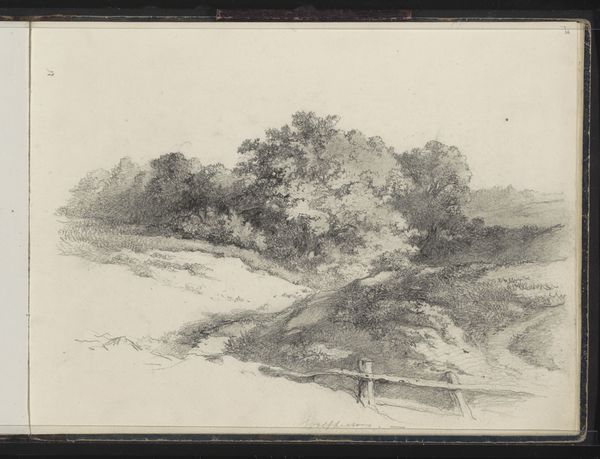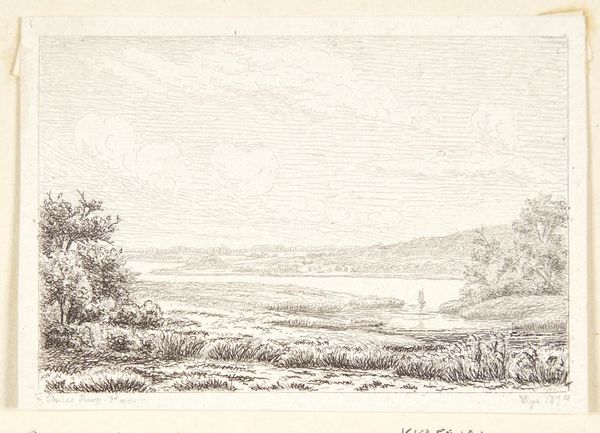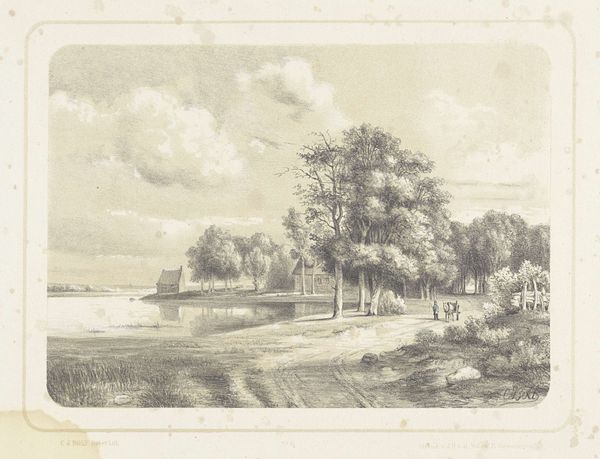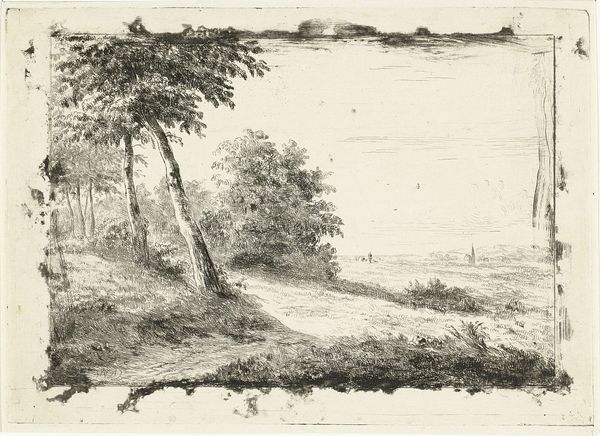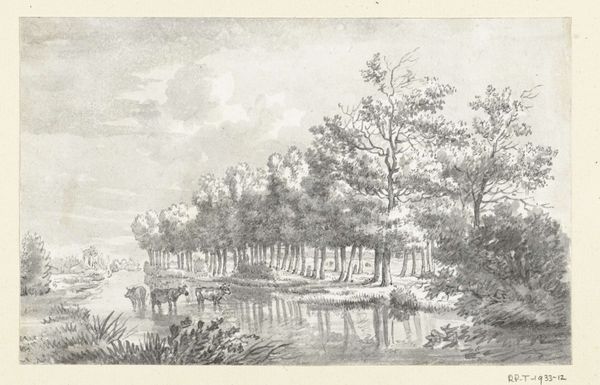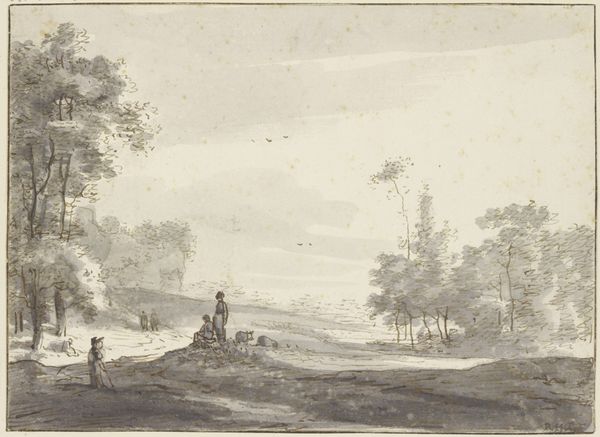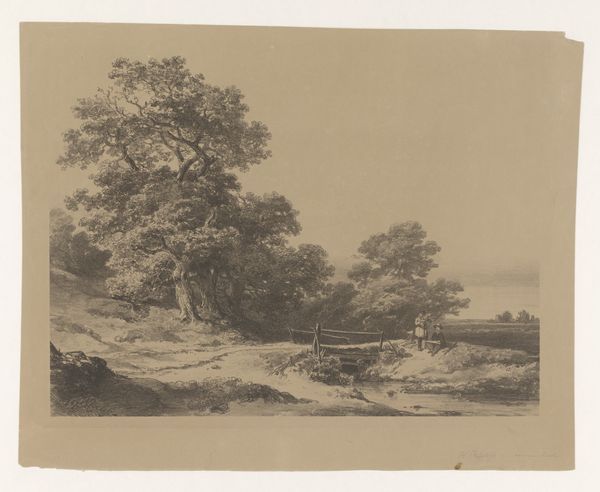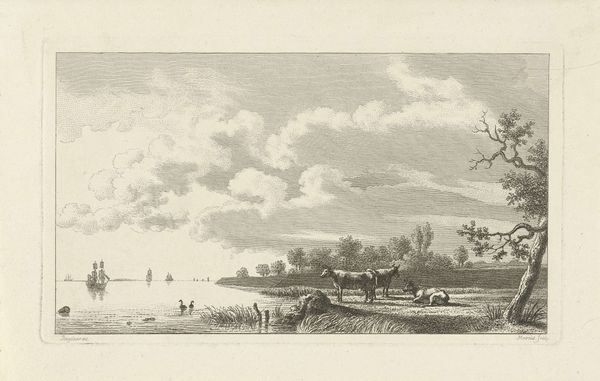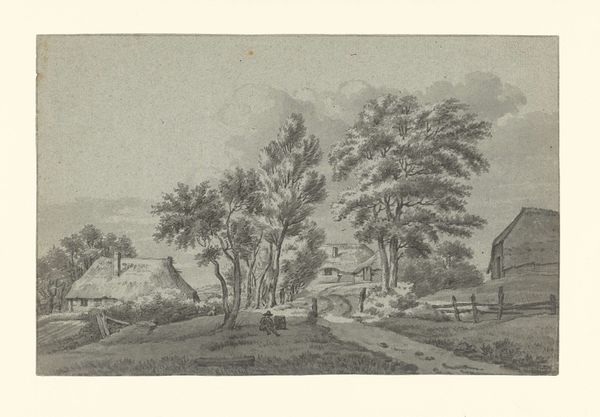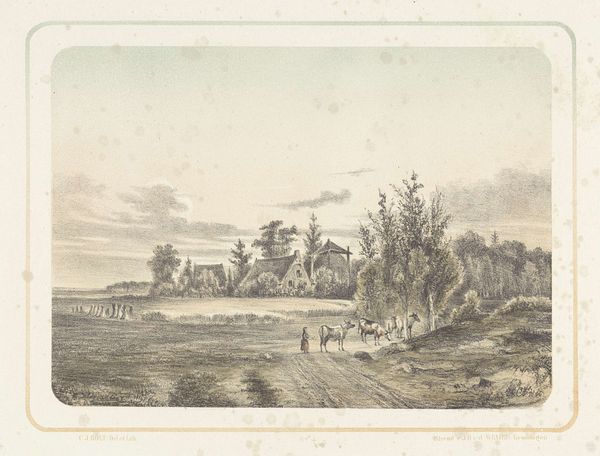
drawing, ink
#
drawing
#
landscape
#
ink
#
romanticism
Dimensions: 282 mm (height) x 398 mm (width) (bladmaal)
Curator: We are looking at Anton Carl Dusch’s 1814 ink drawing entitled “Park med lille tempel ved Elben. Buxtehude,” a park landscape with a little temple near the Elbe river, in Buxtehude, Germany. Editor: My immediate impression is a serene, melancholic landscape, maybe due to its monochromatic nature and the softness of the ink lines. The distant view offers an openness in contrast with the closed area to the right. It’s like an invitation, perhaps even a social statement on open access versus enclosure? Curator: The ink wash technique is characteristic of Romanticism, creating that atmospheric perspective and imbuing the scene with a certain emotional depth, emphasizing the individual’s experience within nature. It's fascinating to consider this piece against the backdrop of post-Napoleonic Europe and the yearning for simpler times. Editor: Yes, you can almost hear the whisper of the wind through the trees. I wonder, though, about the figures within the landscape. They feel dwarfed by nature, yet they are also intruding upon it, disrupting its supposed purity. How does this reflect societal power dynamics in 19th-century Germany? The tension is interesting here. Curator: It underscores the broader themes within Romantic art; humans seeking connection to the sublime. Buxtehude as a place provides a regional context too: it’s been a small but powerful city over time; part of an Archbishopric, later Sweden and then Prussia. It seems this work suggests an aesthetic response to real geopolitical and social histories. Editor: I am taken by the fact that Dusch elected to draw that tiny temple almost hidden amongst the foliage, as a symbolic element amidst nature’s overwhelming power. It also hints at humanity's attempts to find order, even to impose their architectural will, even briefly, on nature. How else can we examine Romanticism in a social light beyond what may meet the eye? Curator: Perhaps by recognizing the subtle ways artists subtly reflected anxieties and aspirations of their time through carefully curated landscapes? They are never truly objective! Editor: Indeed! The conversation of nature and structures becomes much more significant then. Curator: That’s where history helps, by providing this drawing a firm grounding, giving rise to interesting insights. Editor: Agreed; let us keep our critical eyes wide open!
Comments
No comments
Be the first to comment and join the conversation on the ultimate creative platform.
